Computer internal parts
Have you ever looked inside a computer case or seen a picture of the inside of a computer? Small parts may look complicated, but what's inside a computer isn't really so mysterious.
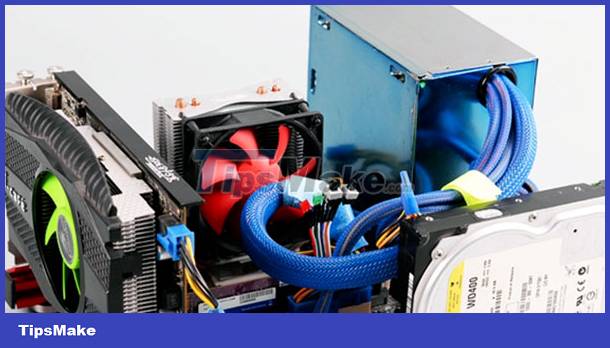 Computer internal parts
Computer internal parts
This article will help you master some basic terms and understand a little more about what's inside a computer.
Motherboard - Mainboard
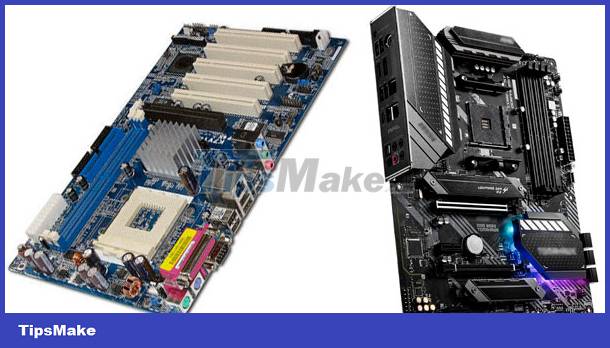 Motherboard is the main circuit board of a computer
Motherboard is the main circuit board of a computer
Motherboard - Mainboard or MotherBoard, is the main circuit board of a computer. It's a thin circuit board containing electronic components including the microprocessor, memory, connectors for hard drives and optical drives, expansion devices for video and audio controls, and connectivity. connected to other ports of the computer. The motherboard connects directly or indirectly to every part of the computer.
Central Processing Unit - CPU
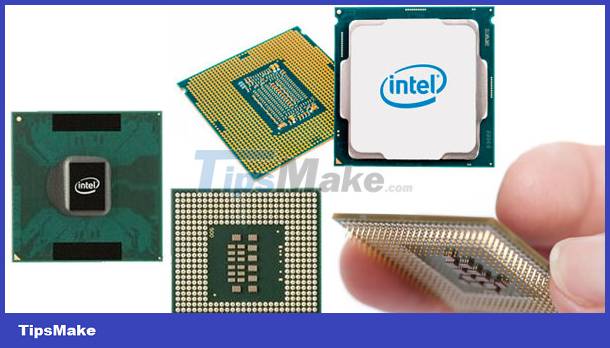 Central Processing Unit - CPU is also known as microprocessor of a computer
Central Processing Unit - CPU is also known as microprocessor of a computer
Central Processing Unit - CPU, short for Central Processing Unit, also known as microprocessor. The CPU is mounted on the motherboard located inside the computer case. It is sometimes called the brain of the computer and its job is to execute commands. Whenever you press a key, click a mouse, or start an application, you are sending instructions to the CPU.
CPUs are usually square with a side of about 5cm, made of ceramic with a Silicon Chip about the size of a fingernail inside. The CPU is mounted in the CPU socket of the motherboard and is covered by a heatsink to help reduce the CPU's temperature.
Processor speed is measured in Megahertz (MHz - Processing Millions of Instructions Per Second) or Gigahertz (GHz - Processing Billions of Instructions per Second). Faster processors can execute instructions faster. However, the actual speed of a microcomputer depends on the speed of many different components - not just the processor.
Memory - RAM
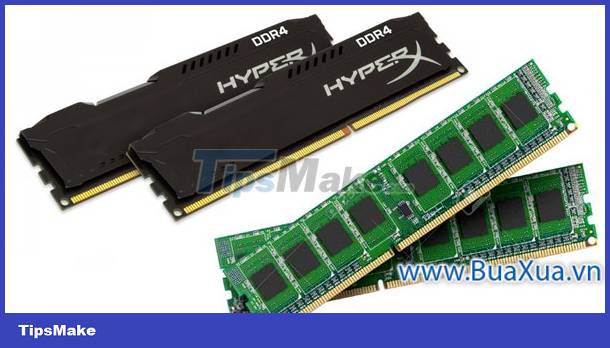 RAM - Random Access Memory is the short-term memory of a computer
RAM - Random Access Memory is the short-term memory of a computer
RAM - Random Access Memory is the system's short-term memory. Whenever your computer performs calculations, it temporarily stores the data in RAM until it is needed.
This short-term memory disappears when the computer is turned off. If you're working with a document, spreadsheet, or other file type, you'll need to save it to prevent it from being lost on shutdown. When you save a file, the data is written to the hard drive, which acts as permanent storage.
The capacity of RAM is measured in Megabytes (MB) or Gigabytes (GB). The more RAM your computer has, the more things it can do at the same time. If your computer does not have enough RAM, you may notice that it slows down when you open some programs. Therefore, many people have added more RAM to their computers to improve speed.
Hard Drive - Hard Drive
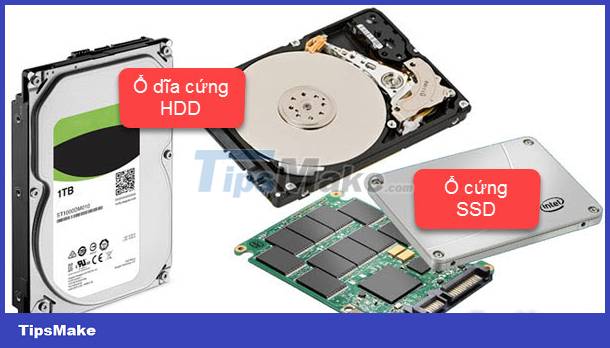 Your hard drive is where your software, documents, and other files are stored in your computer
Your hard drive is where your software, documents, and other files are stored in your computer
Your hard drive is where your software, documents, and other files are stored. Hard drives can be stored for a long time, meaning that data is still saved even when you turn off the computer or unplug it.
When you run a program or open a file, the computer copies some data from the hard drive to RAM. When you save a file, the data is copied from RAM back to the hard drive. The faster your hard drive is, the faster your computer can start up and load programs.
A computer's hard drive can be a magnetic drive - Hard Disk Drive, abbreviated as HDD or solid state memory chips - Solid State Drive, abbreviated as SSD.
Optical drive
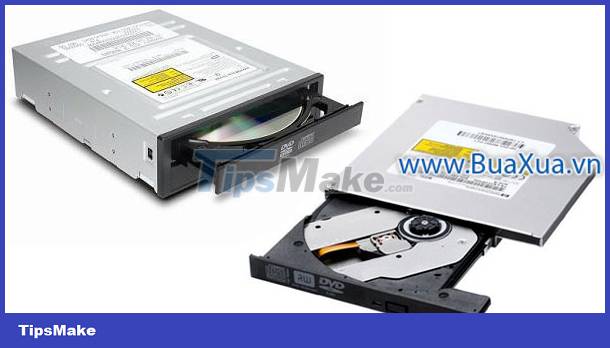 Optical drive is used to install programs on the computer or watch movies, listen to music
Optical drive is used to install programs on the computer or watch movies, listen to music
Commonly known as a CD-ROM or DVD-ROM drive, it allows your computer to read CDs and DVDs. You can use it to install programs on your computer or watch movies, listen to music.
Some optical drives have the ability to burn and erase data on CD/DVD RW discs, so they can also be used to store your software, documents and other files.
Power Supply Unit - Power Supply Unit - PSU
 The power supply in the computer converts from the home power supply to the type of power the computer needs
The power supply in the computer converts from the home power supply to the type of power the computer needs
The power supply unit, or power supply in a computer for short, converts from the home power source into the type of power the computer needs. It supplies power through cables to the motherboard and other devices inside the computer.
If you decide to open the computer case for review, be sure to unplug the computer first. Also, before touching the computer's internals, it's a good idea to touch a grounded metal object — or the metal part of the computer case, to remove any static build-up on the computer. your body. Static electricity can be transferred from the body through the computer's electrical circuits and can damage your device.
Expansion Card - Expansion Card
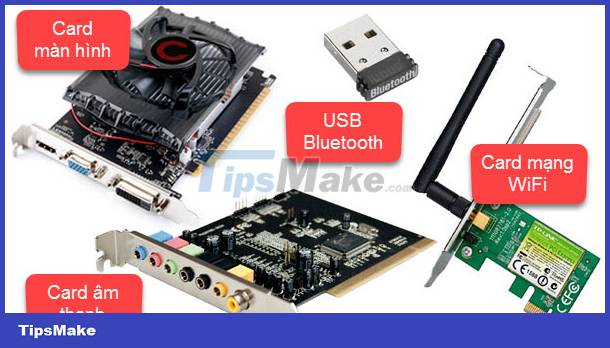 Some types of expansion cards are usually installed in computers
Some types of expansion cards are usually installed in computers
Most computers have expansion slots on the motherboard that allow you to insert a variety of expansion cards. They are sometimes called PCI cards - Peripheral Component Interconnect. You may never need any more expansion cards as most motherboards come with Video, audio, network and other functions built-in.
However, if you want to increase the performance of your computer or upgrade an old one, you can add one or more wide cards. Here are some of the most common types of expansion cards.
Expansion devices are made in the form of cards to plug into slots on the motherboard, so they are often called Cards, such as Video Cards (Graphics Cards), Network Cards, etc.
first
Video Cards - Video Cards
The image processing card, also known as the video card, is responsible for what you see on the screen. Most computers have a graphics processing unit - GPU - Graphics Processing Unit, which is integrated in the motherboard instead of having a separate video card. If you enjoy playing graphics-intensive games, you can insert a more powerful Video card into one of the expansion slots for better graphics processing.
2
Sound Card - Sound Card
A sound card, also known as a sound card, is responsible for what you hear in your speakers or headphones. Most motherboards have built-in audio, but you can upgrade to a dedicated Sound Card for higher quality sound.
3
Network card - Network card
A network card, also known as a network card, allows your computer to connect and communicate over the network to access the Internet. It can connect using an Ethernet network cable or through a wireless connection, commonly known as Wi-Fi. Many motherboards have built-in networking, and you can also add a network card to an expansion slot if you want.
4
Bluetooth Card - Bluetooth Card or Bluetooth Adapter
Bluetooth is a short distance wireless communication technology. It is commonly used in computers to communicate with wireless keyboards and mice. Bluetooth can be built into the motherboard or in the wireless network card. For computers without Bluetooth, you can purchase a USB adapter - Bluetooth USB adapter, commonly known as a Dongle.
You should read it
- How to assemble expansion cards for computers
- Computer source: Things to know
- What is a computer?
- Installing a computer
- 5 biggest mistakes when choosing computer hardware
- Connect your computer to the Internet
- Choosing SSD hard drives for computers
- Multi-level SSD: SLC, MLC, TLC, QLC and PLC?
- What is a laptop?
- 25 interesting things about hard drives you may not know
- 5 things to know when buying computer power supplies
- 5 silly mistakes when fixing computers that many people still believe in their necks




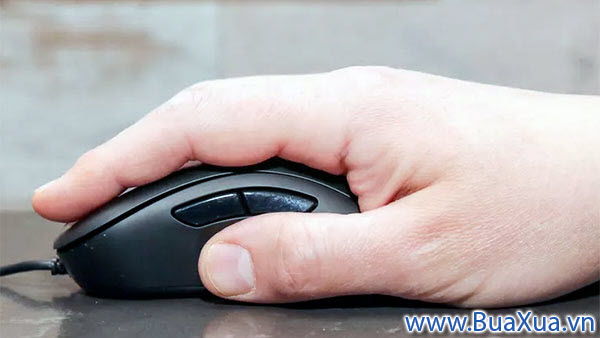

 How to Ground Yourself to Avoid Destroying a Computer with Electrostatic Discharge
How to Ground Yourself to Avoid Destroying a Computer with Electrostatic Discharge How to Start a Used Auto Parts Business
How to Start a Used Auto Parts Business Some notes when removing and installing CD ROM drive
Some notes when removing and installing CD ROM drive In the future, these excess body parts may completely disappear due to evolution
In the future, these excess body parts may completely disappear due to evolution Learn to use lesson 2 computer - Basic parts of the computer
Learn to use lesson 2 computer - Basic parts of the computer 9 parts of your body make women more drunk
9 parts of your body make women more drunk